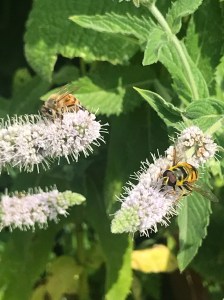
When I worked on plant trials in the past, one of the things I often used to assess was how attractive plants were to pollinating insects. As we all know, some types of plants such as lavender and sunflowers are known to be popular with bees but it was interesting to see how even within those genera there would be certain species or cultivars that attracted more bees than the others. There were also certain plants that attracted a far greater range of pollinators. Sedums, and particularly asters really stood out, drawing in bees, butterflies and many different types of hoverflies and flies – which are often completely overlooked when we talk of pollinators but which are vital for certain crops. I have read that without a certain species of midge there would be no chocolate. Imagine that.
Although I’ve got a few sedums in my garden I don’t have any asters and have missed the cornucopia of insects they entice in. Until this week, that is, because this week I discovered that one of my mint plants, which had come into flower while I was away on holiday, is also the sort of plant that many different pollinators go wild for. There are bees, of course. Bumble bees …

……. and honey bees (and friends)


But also so much more. I strolled down the garden one sunny morning and there they all were – buzzing, circling, fluttering, jostling and crossing frenetically from one flower spike to the next. Bumble bees, honey bees, flies, hover flies small and large (some of them are huge!), butterflies and moths – well, one moth. I thought my wild oregano plant was popular but it’s deserted compared to this mint. There are more insects than you can shake a stick at, and certainly a lot more than I can identify. I’ve spent some time just trying to work out whether some of them are flies or bees, so adept are some flies at mimicking the distinctive yellow and black stripes of bees and wasps (I believe they do this to avoid being eaten by birds).
I started trying to photograph them all.
Here, I think, are the hoverflies. It’s quite likely I’ve included some of them more than once in pictures taken from different angles but I’m pretty sure there are six or seven different types. If anyone can identify any of these I’d be delighted.

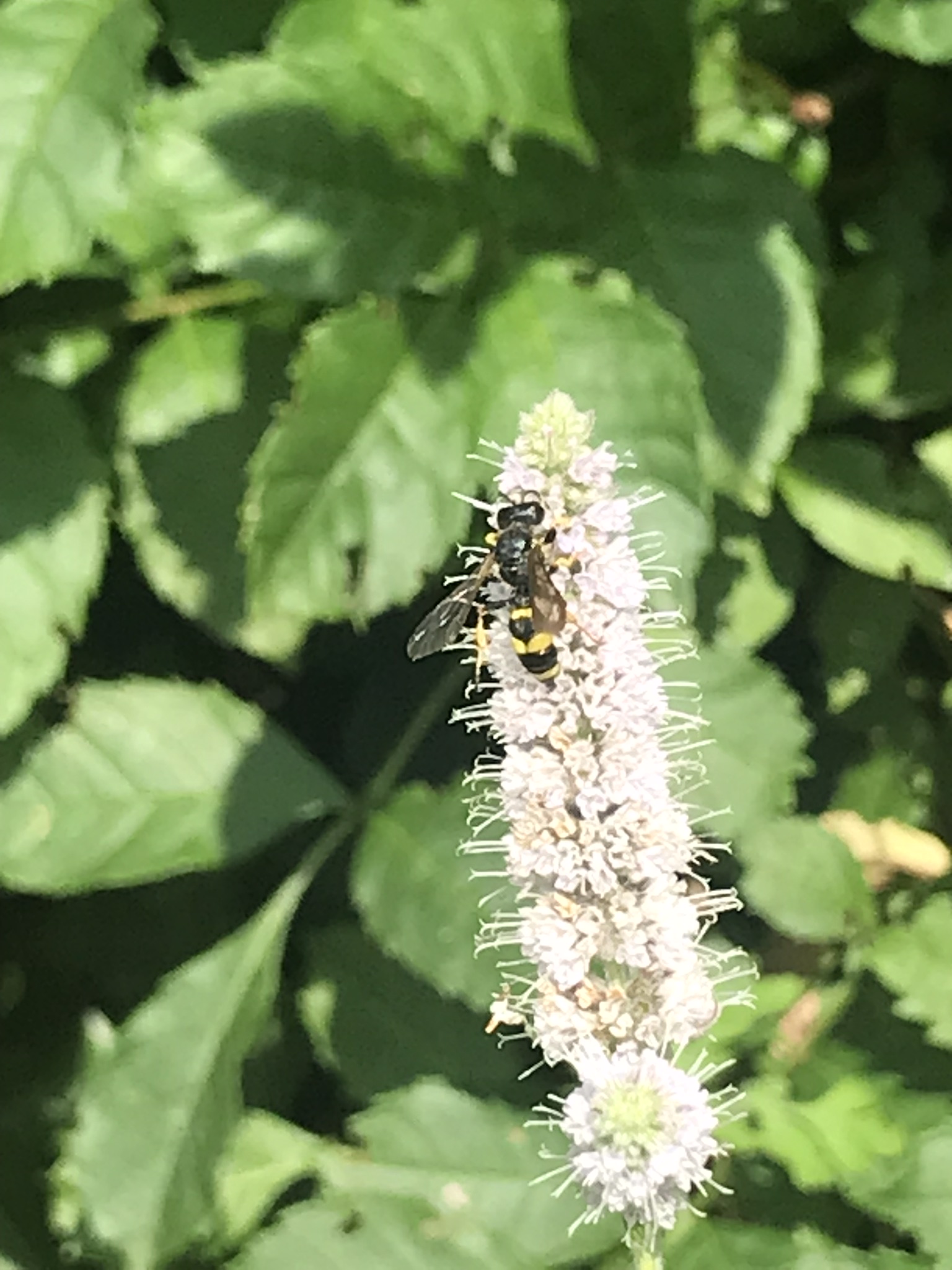






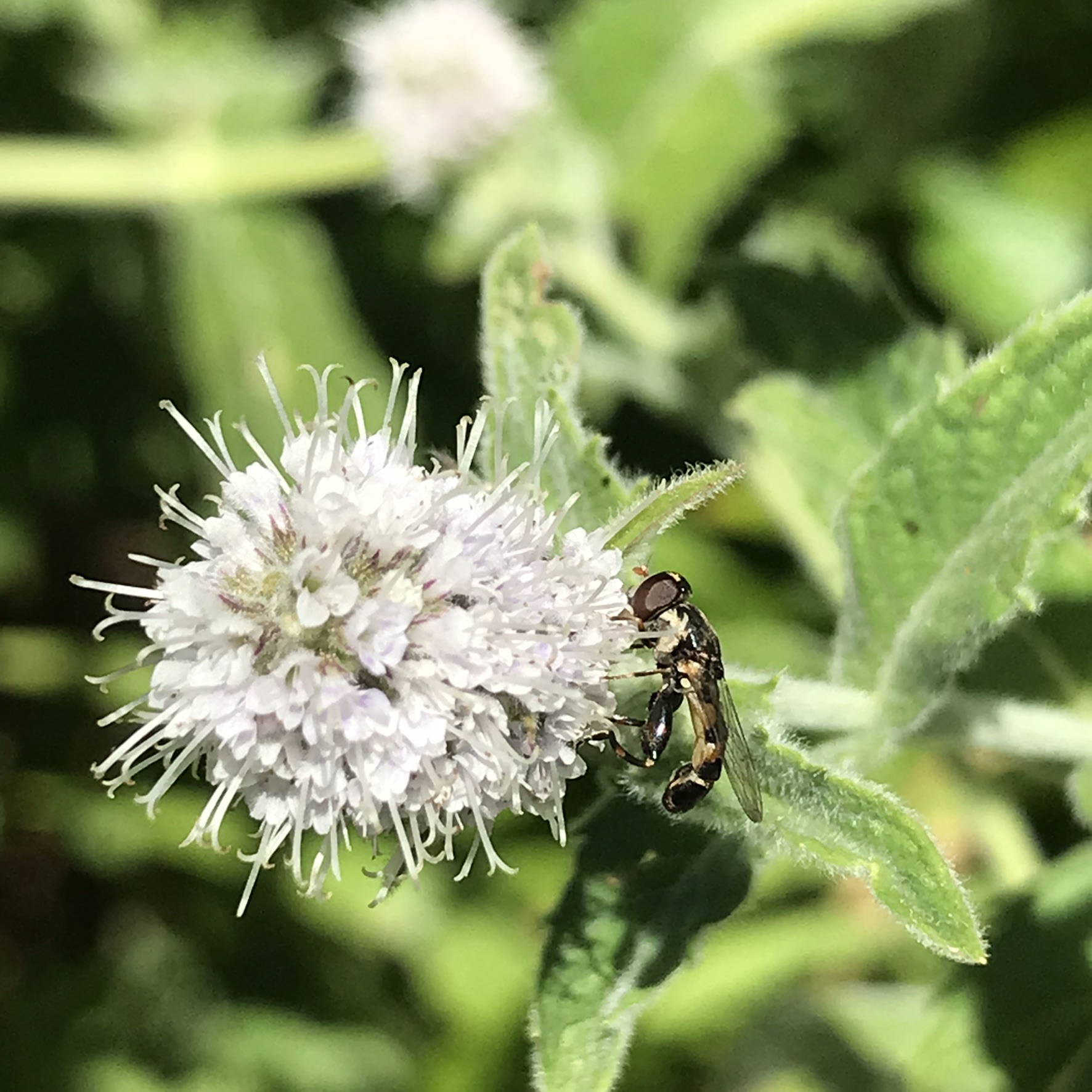
Here are some of the flies that look like flies
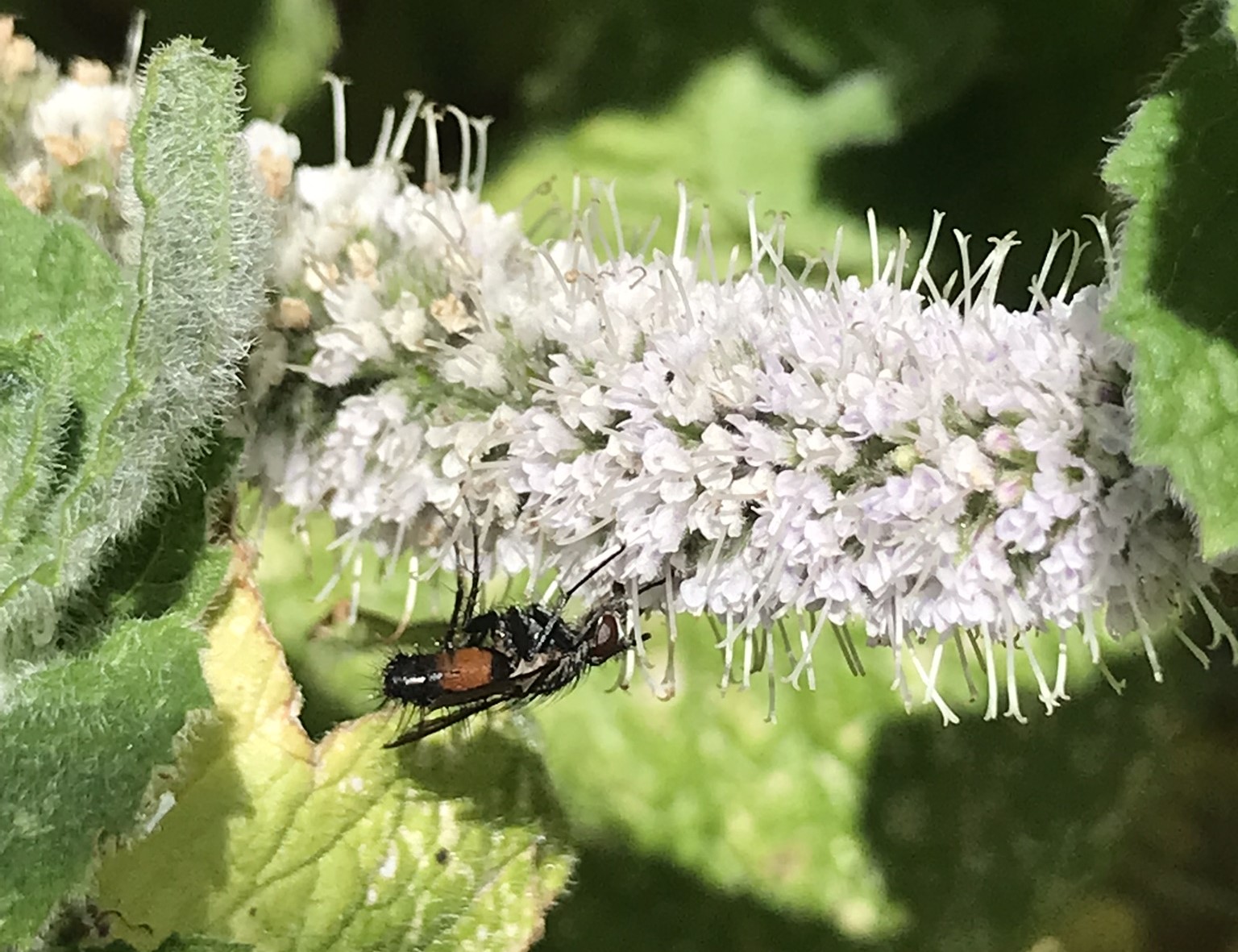


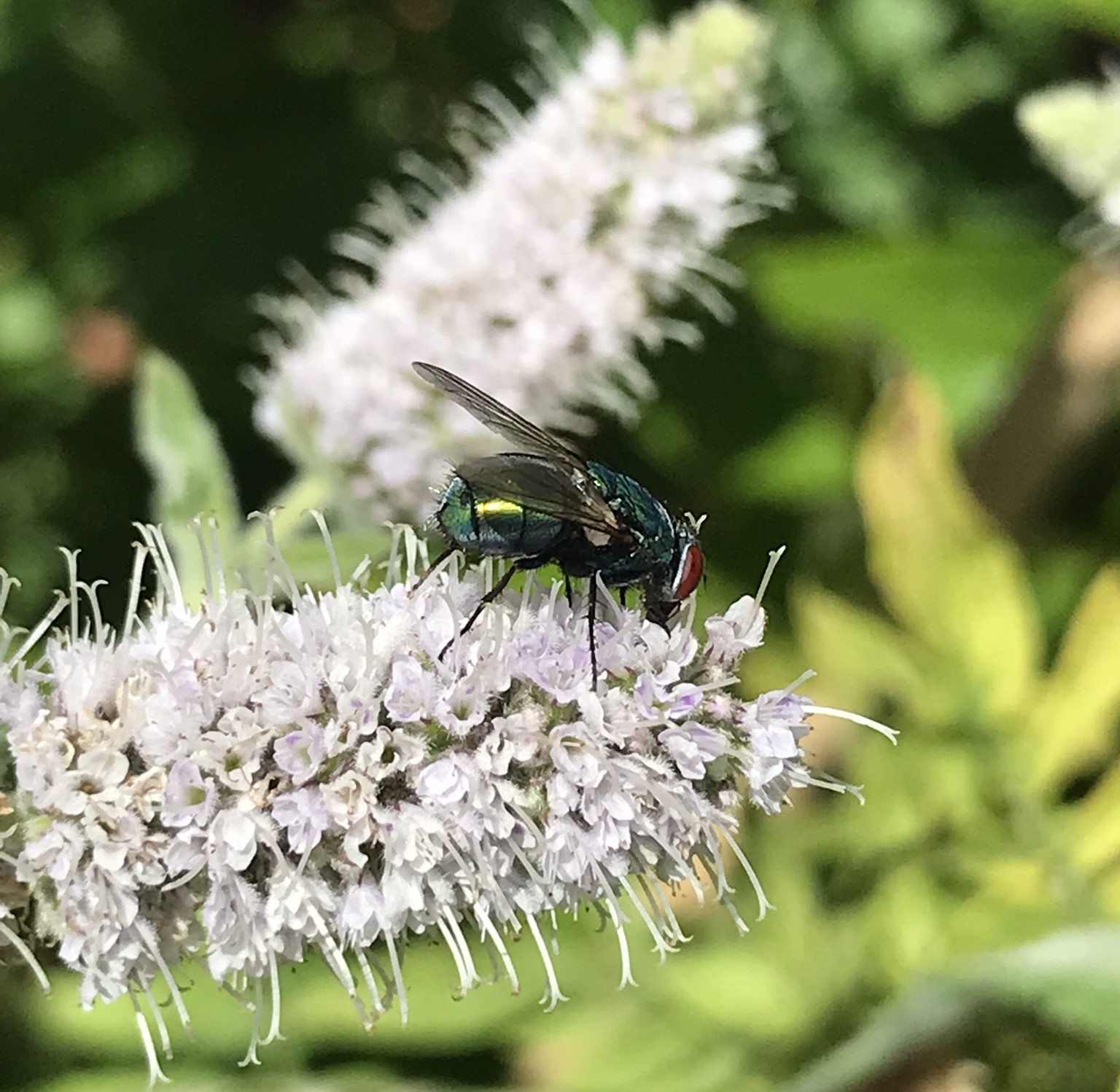

Here are the butterflies – a peackock, a gatekeeper and, excitingly, a comma, so good I photographed it twice.




And here is the one I’d been expecting but only saw briefly – the mint moth

There were also two types of wasp, I believe (again one of them is repeated in pics taken at different angles)

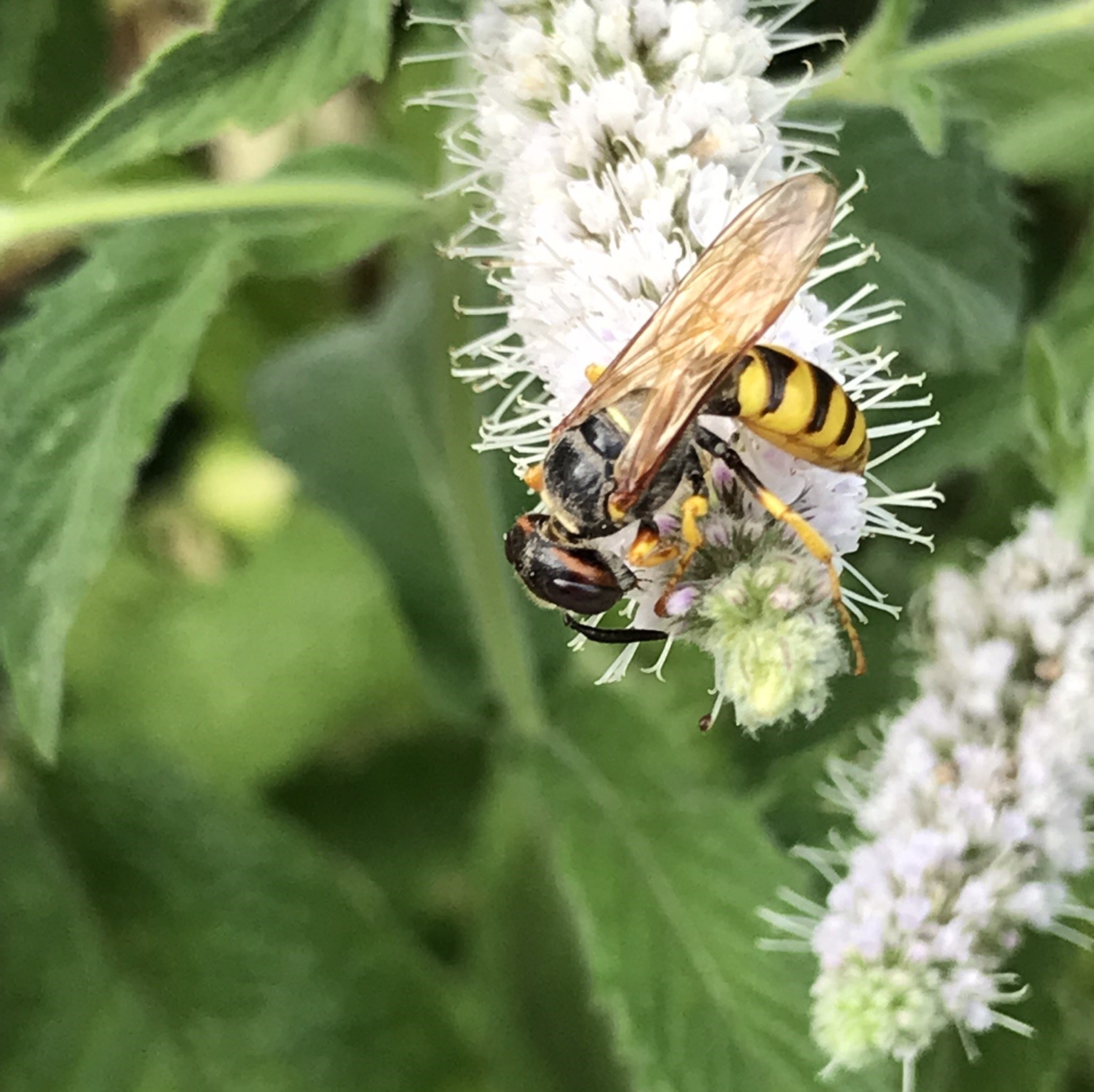


And something very small that seems to be some sort of a beetle. Probably not a pollinator but living on the mint so I decided to include it.

In previous years this mint was smaller and I’ve pinched out a lot of the flowers because I like to use the leaves for tea – and because the plant is too close to the washing line so the flowers get in the way. Now the roots have grown through the bottom of the pot and it’s doubled in size, but I won’t stop if flowering again. I can always tie the plant back so it doesn’t snarl the sheets and it’s been a joy to see so many different insects so keen to get their fill of mint nectar. Let’s face it, insect numbers are declining dramatically and they need all the help they can get.
How to tell a fly from a bee
I’m no expert, as I may be about to prove, but these would seem to be the key differences to look for when trying to tell whether it’s a fly (including those bee mimics the hoverflies) or a bee or wasp you’re seeing on your plants.
- The eyes
Flies have huge eyes that resemble a pair of large goggles, whereas bees have smaller, shiny oval eyes.
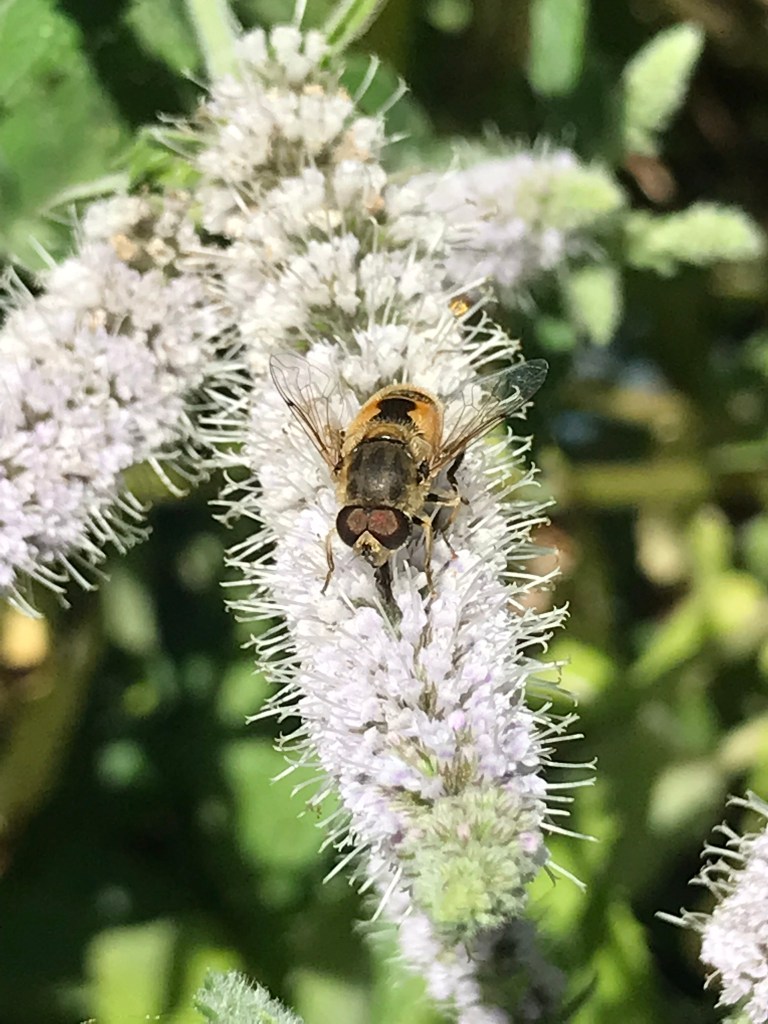

2. Wasp waist
Their bodies have a different shape. Bees (and wasps) have a narrow waist while flies have a fatter body.


3. Antennae
You can see the longer bee antennae in the photo above and the picture of the wasp. Flies have short antennae apparently, though I admit I can’t see them at all in the photo below so perhaps they don’t always have them.

4. Wings
Flies have one set of wings and bees and wasps have two – although this isn’t massively helpful as it’s hard to see the two sets on a bee, and I’m told they can be fused into one!
Now you just need to head outside, find some flowers and have a close look at those insects!
Categories: Visits with interesting plants
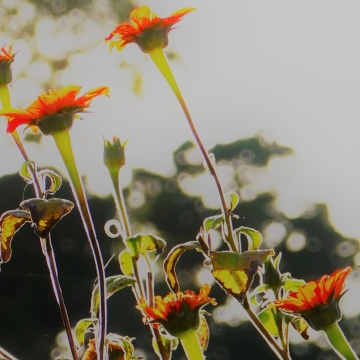

An interesting read.
I’m particularly fond of hoverflies, lots of them in this garden.
LikeLike
You must have a good mix of plants for them. I don’t normally get as many as I’m seeing this year. Maybe the hot weather has been good for them!
LikeLike